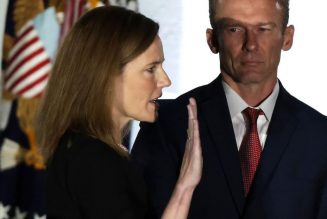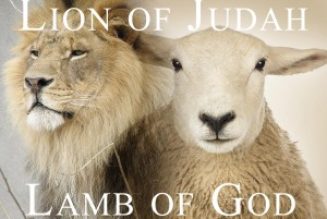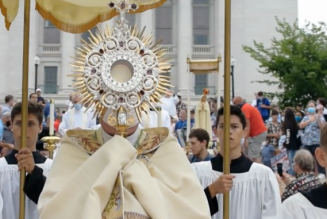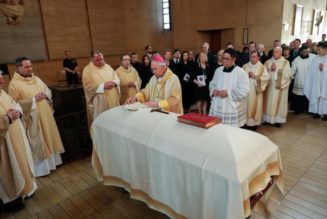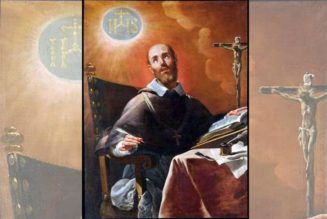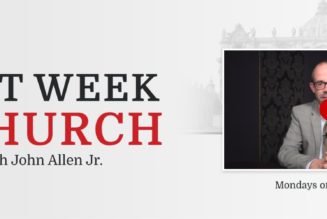By Fr. Jerry Pokorsky ( bio – articles – email ) | Nov 07, 2022
Jesus engages us and prompts our active participation in His divine plan through the Sacred Liturgy, as guided by the doctrinal teachings of the Church. Theological study helps deepen our understanding and enriches our freedom as disciples. The distinction between Catholic doctrine and theology provides the key to understanding every magisterial teaching, including the extensive documents of the Second Vatican Council. The relationship of the Church’s teaching with Tradition and Sacred Scripture provides the unifying principle of theological understanding.
Some say that we have overlooked the transformative purpose of Vatican II. We were too defensive in response to the hostility of Protestants and secularists, they say. We defended Church teaching with an excessive reliance on logical presentations. Papal primacy eclipsed the role of other members of the hierarchy, and we often ignored the centrality of Jesus, holiness, and beauty. There was insufficient emphasis on the word of God. Just as translations of the Bible needed updates, modern sensibilities required some liturgical changes.
Others point out that the documents of Vatican II are not without significant difficulties. The thick conciliar volume inevitably includes distortions and defects, such as chatty optimism, doctrinal ambiguities, and even the endorsement of a world authority to govern embattled nations. An excessive desire to please non-Catholics blunts doctrinal precision. The Constitution on the Sacred Liturgy unexpectedly opened a Pandora’s Box of unintended liturgical consequences.
Did Vatican II accomplish what it set out to do? It’s hard to say. The faith in Africa is thriving, but church attendance is still shrinking in the West. The litany of post-conciliar iniquities is extensive: liturgical innovation and abuse, doctrinal dissent, the vocations crisis and the decline of church attendance, Marxist/Leninist liberation theology, feminist ideological impositions on sacred ministries, ideological manipulations of ecclesiastical translations, and so on.
Many orthodox Catholics link Vatican II to the post-conciliar breakdown in Catholic life. Most of the post-Vatican II focus has been on the liturgy, because it most visibly expresses the Catholic faith. Liturgy liberals invoke Vatican II as a stick to beat those who worship God and pray with the Church’s traditional liturgy (as if the Old Mass failed to hand down the deposit of faith). Many of the arguments on all sides are politicized and adrift from unifying Catholic principles. (The accusation that someone or some idea is “pre-Vatican II” has been a common insult.)
Amidst the turmoil, Vatican II’s Dogmatic Constitution on Divine Revelation—Dei Verbum—is a remarkable rediscovery that provides essential unifying principles. After presenting the gradual unfolding of the faith, Dei Verbum describes the doctrinal reliability of the authentic Catholic teaching office:
…the task of authentically interpreting the word of God, whether written or handed on, has been entrusted exclusively to the living teaching office of the Church, whose authority is exercised in the name of Jesus Christ. This teaching office is not above the word of God, but serves it, teaching only what has been handed on, listening to it devoutly, guarding it scrupulously and explaining it faithfully in accord with a divine commission and with the help of the Holy Spirit, it draws from this one deposit of faith everything which it presents for belief as divinely revealed. [emphasis added] (#10).
What we might call the logical iron triangle of revelation, involving Tradition, Scriptures, and Magisterium, uses theological reasoning guided by the Holy Spirit to safeguard the purity of the deposit of faith:
It is clear, therefore, that sacred tradition, Sacred Scripture and the teaching authority of the Church, in accord with God’s most wise design, are so linked and joined together that one cannot stand without the others, and that all together and each in its own way under the action of the one Holy Spirit contribute effectively to the salvation of souls.” (#10)
Dei Verbum helps us distinguish between the requirements of Catholic doctrinal accuracy (including those of the ordinary Magisterium) and the usefulness of theological speculation. Doctrines—requiring Catholic assent—have theological roots that extend from the Magisterium through Tradition to Sacred Scripture. Theological studies that expand our understanding of doctrines are helpful. But theological judgments require our faithful assent only when the Church recognizes them as doctrines rooted in Tradition and Sacred Scriptures. For example, the Church endorsed the Immaculate Conception and the Assumption as dogmas after centuries of theological reflection on the greeting “Hail, full of grace,” in the Church’s womb of Tradition.
The implications are enormous. Vatican II’s Dei Verbum is an indispensable unifying tool of theological analysis. Its mechanism reinforces our faith with fighting words: “This teaching office is not above the word of God….” Church authorities must not separate their teaching from the tap root of Tradition. Popes and prelates have no right to dismiss the teachings of Jesus as we know Him through the Magisterium, Tradition, and Scriptures. Dei Verbum provides the reasonable configuration of faith that supports the promise of Jesus: “Thou art Peter; and upon this rock I will build my church, and the gates of hell shall not prevail against it.” (Mt. 16:18)
Hence, the faithful may freely disagree with unpersuasive applications of Catholic doctrine (to immigration, climate change, prudential questions of war and peace, etc.) having little or no connection with Catholic Tradition. We must reject in conscience—as violations of the doctrinal teachings of Vatican II’s Dei Verbum—impositions of authority that claim to stand above the Word of God: unlawful exceptions to the indissolubility of marriage, gay unions, pantheism, idol worship, and all teachings that violate the unity of authentic Magisterium, Tradition, and Scriptures.
This brief and concise Vatican II document provides the linchpin for the Church’s so-called “hermeneutic of continuity,” linking the doctrines and theology of the pre-Vatican II era to the post-conciliar age and beyond. Dei Verbum not only helps us understand Church documents. It also affirms sound teaching or indicts the doctrinal narcissism of priests, prophets, and popes.
A lovely popular image portrays Mary holding a Rosary in prayer. Our Lady is pondering the words of the Angel Gabriel: “Hail, full of grace.” The Angel’s words are doctrinal, and Mary’s repetitious prayer is a faithful theological reflection upon the Incarnation of Jesus, her Son, Savior, and Lord. The image helps us understand Church teaching and navigate the choppy waters of the faith in every era.
Sound Off! CatholicCulture.org supporters weigh in.
All comments are moderated. To lighten our editing burden, only current donors are allowed to Sound Off. If you are a current donor, log in to see the comment form; otherwise please support our work, and Sound Off!

Join Our Telegram Group : Salvation & Prosperity


